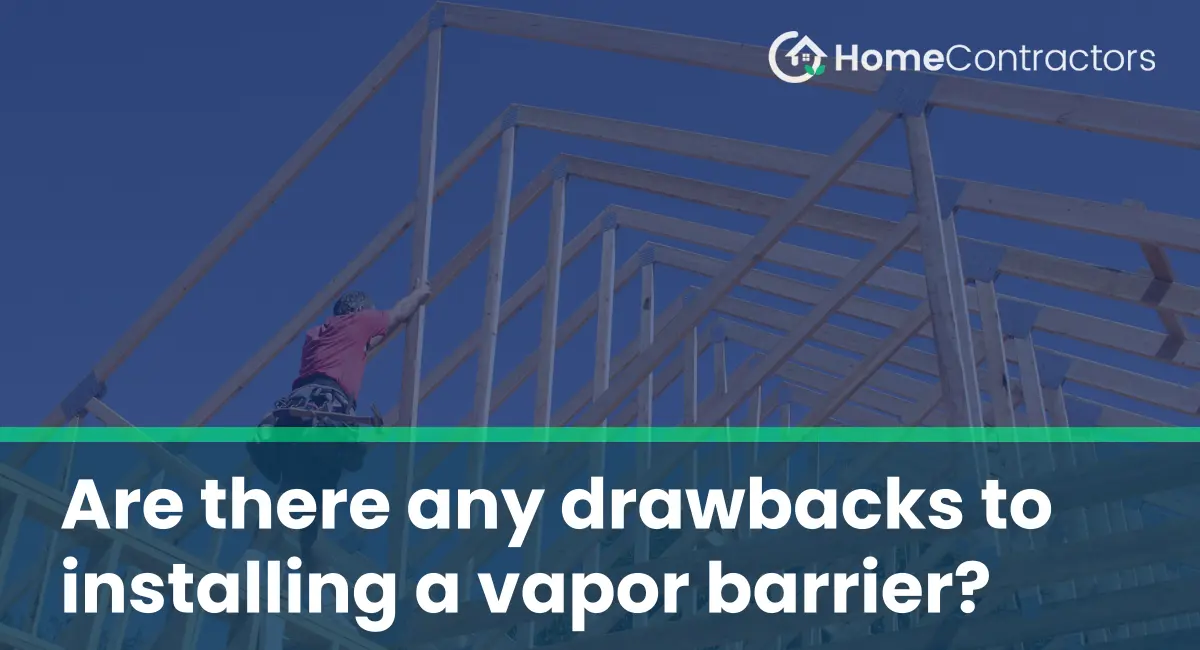Before delving into the drawbacks, let’s briefly define what a vapor barrier is. A vapor barrier is a material, typically made of plastic or foil, that is installed on the warm side of a wall, ceiling, or floor assembly to block the movement of moisture-vapor. By doing this, it helps to maintain controlled humidity levels within the building envelope.
The Drawbacks:
1. Trapped Moisture:
While the primary purpose of a vapor barrier is to keep moisture out, there is a potential drawback when it comes to preventing the escape of moisture. If a vapor barrier is improperly installed or if there is an existing moisture issue within the walls, it can act as a trap and prevent the trapped moisture from evaporating. This trapped moisture can lead to the growth of mold and mildew, which can cause health issues and structural damage over time.
2. Inadequate Ventilation:
When a vapor barrier is installed, it is crucial to ensure that the building’s ventilation system is properly designed. If the ventilation is inadequate, excess moisture will accumulate behind the barrier, potentially leading to condensation and mold growth. Therefore, it is essential to consider the overall ventilation strategy of the building to complement the installation of a vapor barrier.
3. Incorrect Placement:
Another potential drawback is the incorrect placement of a vapor barrier. The barrier should be installed on the warm side of the building envelope, typically facing the interior of the building. If it is mistakenly installed on the cold side, facing the exterior, it can lead to moisture accumulation and subsequent damage to the building materials.
4. Cost and Complexity:
Installing a vapor barrier can be a complex and time-consuming process, especially for larger construction projects. It requires careful attention to detail and knowledge of building science principles. Additionally, purchasing the necessary materials and tools can add to the overall cost of the project. Therefore, it is important to consider the added expense and complexity before deciding to install a vapor barrier.
5. Compatibility with Other Building Components:
Lastly, it is crucial to consider the compatibility of a vapor barrier with other building components. For example, if a vapor barrier is installed in a building with inadequate insulation, it can lead to moisture condensation on the insulation itself, reducing its effectiveness. Therefore, it is essential to ensure that the vapor barrier is compatible with other building systems and materials to avoid potential issues down the line.
While installing a vapor barrier can offer numerous benefits in terms of moisture control and protection against potential damage, it is not without its drawbacks. These include the potential for trapping moisture, inadequate ventilation, incorrect placement, complexity, additional costs, and compatibility issues. It is crucial for builders, contractors, and homeowners to weigh these drawbacks against the benefits to make informed decisions about whether to install a vapor barrier in their construction or renovation projects. Therefore, careful planning, proper installation techniques, and consideration of the specific circumstances are essential to minimize any potential drawbacks and maximize the positive impact of a vapor barrier.
